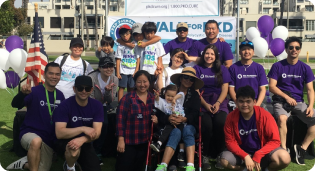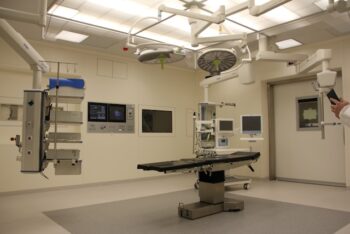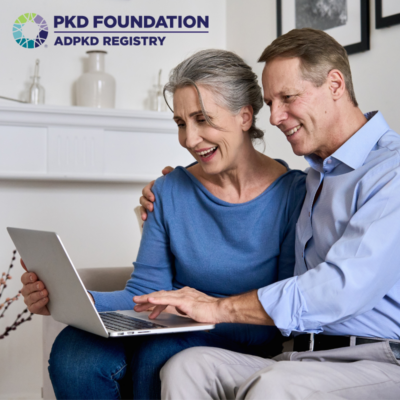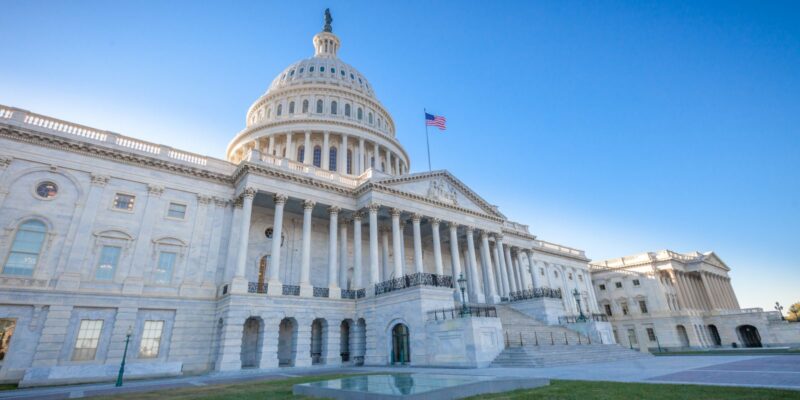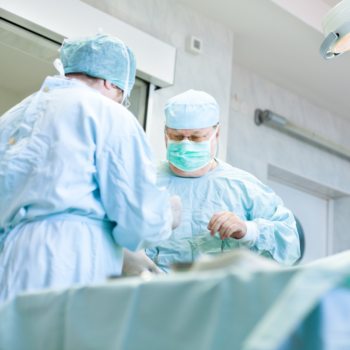Published on March 31, 2022 | After a diagnosis, it’s natural to have questions about polycystic kidney disease. How will it affect your daily life? Is there a treatment? How do I manage PKD complications? Finding the right healthcare team can make things easier. With the help of her nephrologist, Dr. Michael Lioudis, Sheila Bradac is managing her PKD complications. During their time together, they went from no options for treatment to the development of tolvaptan. The process from diagnosis to managing PKD is a journey you might recognize.
The Beginning: Diagnosis
For many, polycystic kidney disease comes as a complete surprise. “When I started seeing Dr. Lioudis, it was a very hard time in my life,” Sheila said. “My father had recently died due to PKD, and our family didn’t know what PKD was.” After a little research, she discovered the disease was hereditary and talked to her primary care physician (PCP) about an ultrasound of her kidneys. After the ultrasound, Sheila’s PCP phoned with the news that Sheila’s kidneys were covered in cysts. Initially, she was encouraged to drink lots of water and take blood pressure medication.
Over time, Sheila’s labs weren’t where they needed to be and her PCP struggled to get them in alignment. So, after being treated by her PCP for years, it was time to find a nephrologist.
Managing PKD Complications: Consulting a Nephrologist
Finally having a care professional who understood PKD gave Sheila hope. Her nephrologist, Michael Lioudis, M.D., is an associate professor of medicine and division chief of nephrology at Update Medical University.
“When people come into the nephrologist’s office, they’re nervous because there is no cure. So, patients have to have a lot of trust in you,” Dr. Lioudis said. “The doctor has to earn that trust every time they interact with the patient. There are a million other things the patient would rather do than be in the office. The question becomes, can you tell the patient I have this with you, so let’s work together to get better control.”
While seeing a nephrologist provided some hope, the lack of a cure remained on Sheila’s mind. At the time, treatments were limited to clinical trials and different medications to treat symptoms. Doctors had to rely on family histories: age of family member’s diagnosis, when did they enter end-stage kidney disease, hospitalizations, complications, etc. From there, treatment meant blood pressure control, cholesterol control, and the theory that drinking water at a certain level helps with hydration.
“As a doctor, you wanted to offer more,” Dr. Lioudis said. Due to limited openings in clinical trials, options were sparse for Sheila. Eventually, Sheila was able to take tolvaptan—and it changed her life.
PKD Complications
What are They?
With Dr. Lioudis, Sheila finally felt like she had someone in her corner. It was empowering that he knew what he was talking about, though disease management was still tricky. Her blood pressure was hard to get under control, but for Sheila, her anxiety was even worse. “Getting labs every month and waiting for the results created a lot of anxiety,” Sheila shared. “If you watch them falling, that creates even more anxiety.”

Alongside anxiety and blood pressure concerns, she faced fatigue. From lack of sleep, a side effect from needing to go to the bathroom at night while on tolvaptan, Sheila often felt brain fog.
Learning to Manage PKD Complications
“The burden of disease is extremely difficult to carry and manage,” Dr. Lioudis explained. “You have to think about, ‘how do we support people in mind and body?'”
For better sleep, Sheila started using a foam mattress. “It hugs your kidneys, so it’s more comfortable to sleep,” she said. Walking every day helps tremendously with her anxiety. And a medication aids in blood pressure control, though it’s not without side effects.
“It’s a balancing act to get the effects you want out of medications with the side effects. How can you minimize the side effects so people aren’t so fatigued, aren’t getting up to use the bathroom?” Dr. Lioudis said. “And you want to make sure when prescribing meds, they aren’t affecting the kidneys in an adverse way. Sometimes it’s a little trial and error because every person is different—not everyone has the same side effects.”
In managing PKD complications, it’s all about finding a balance of diet and exercise tailored to the patient. Of course, transparency with your doctor is key. “We want to work with patients, we want to hear their side effects,” Dr. Lioudis shared.
Sheila reminds patients like her to be their own best advocates and to always learn and stay active in their health. “The PKD Foundation has the best website with information you can understand. It’s true, accurate, and uplifting,” Sheila explained. “Stay involved with the Foundation or a resource you find on your own to give you a good quality of life. I try to do things I couldn’t do while at work like volunteering at an arts center and joining a book club.” For Sheila, reading PKD Life, the free Foundation magazine, gives her hope. In particular, the articles discussing what medical researchers are working on leave her optimistic.
Things to Remember
“The way I think about PKD is understanding the family history, and the sooner you understand that and have a diagnosis, then the more options you have available. If we can intervene in an earlier stage, we can provide even more hope for people,” Dr. Lioudis stated. With more research and ongoing clinical trials, the understanding of PKD is growing. By finding a nephrologist as soon as possible, it opens up opportunities to participate in clinical trials for emerging therapeutic treatments.
If you have PKD or suspect you do, Dr. Lioudis recommends finding a partner in healthcare. “Whether it’s a doctor or an advanced care provider that you can partner with, get as much information as soon as possible so you understand what’s coming down the pipeline. Have them be your partner so they walk with you on this tough journey.”

As you navigate PKD, Sheila wants you to remember. “Try not to let PKD define you and always try to create awareness so you can help others.”
For resources on living with PKD, check out PKD Connect. Here you’ll find education and tools to help you at any stage of your PKD journey.



